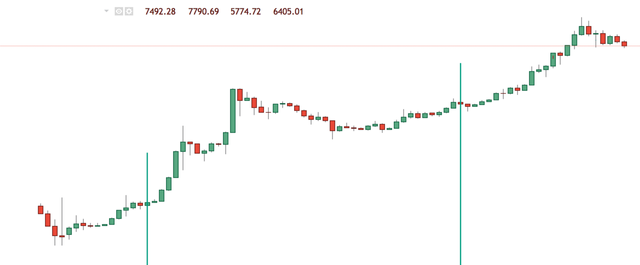Bitcoin inflation rate to drop below that of the USD for the first time ever!
Bitcoin is about to get very interesting from a store of value perspective.
Bitcoin is going to have its next halving event in a little over one year.
This may sound like a long ways off still, but keep in mind, historically bitcoin has started to price in a halving event roughly 12 months and 10 months prior, at least in the two prior halving cycles.
You can see how the price has reacted around the last two halvings here:
(Source: https://www.bitcoinclock.com/)
A possible outcome from the next ones can be seen here:
(Source: https://www.tradingview.com/chart/BLX/uYKn9Nrx-Bitcoin-longterm-chart/)
We are getting very close to those 12 and 10 month time-frames now...
The reason this halving in particular is so interesting is because it will mark the first time ever that the issuance rate of new bitcoins will fall below that of the target annual inflation rate of central banks.
Some specifics:
The next bitcoin halving date is projected to be roughly 429 days from today.
(Source: https://www.bitcoinclock.com/)
Roughly 1,800 new bitcoins are mined every single day currently.
That number will fall to 900 every day once the next halving takes place.
That will drop bitcoin to roughly a 1.8% inflation rate.
A number that is below the 2% target rate of most central banks.
This will mark the first time bitcoin's inflation rate will be lower than that of the USD and other fiat currencies.
It's at this point it really starts to get interesting as a store of value.
It really gets interesting once the next halving event occurs after this one, in 2024.
At that point, the inflation rate will fall well below fiat currencies, precious metals, and commodities.
If we can hold on till then, I think prices will be significantly higher than they are currently!
Stay informed my friends.
-Doc


Very interesting 🧐
I think so as well.
SHORT THE BANKS, LONG BITCOIN
I agree.
Keep in mind that when the central banks talk about a 2% target, they're talking about CPI. In Bitcoin, inflation rate refers to the expansion of the money supply. Bitcoin has likely been below the USD for some time in terms of monetary expansion. CPI is something impossible to measure in Bitcoin because a) it's rarely used for household goods and b) it goes up and down dramatically within a measuring period.
Very good points, though this was the closest comparison I could get. You are correct though, not quite apples to apples. Though the result is somewhat similar.
It is actually possible to compare Bitcoin supply to the USD supply, it's just a matter of which definition of money supply you choose to use. IMO M1 is the closest comparison.
https://www.federalreserve.gov/releases/h6/current/default.htm
From the above link, USD M1 expanded 3.8% from February 2018 to February 2019. M2 expanded 4.2% in the same period. By this it seems Bitcoin monetary expansion is currently quite similar to USD expansion but will drop to less than half USD expansion soon. If we accounted for lost coins and removed them from the totals, it might change those numbers but that would be tricky to say the least.
I haven't checked the link yet but does M1 account for money taken out of circulation each day as well?
If you mean bank notes and coins replaced, yes it does. But M1 also includes bank deposits. Narrow Money only includes notes and coins in circulation, but that's not a good figure to compare to because in the fiat system notes are created on demand.
Yep that is what I was referring to.
This is the main reason why bitcoin will be one of thebmain stores of value in the financial markets, potentially outshining (pun intended) gold itself. Imagine taking a piece of the $7 trillion gold market!
Posted using Partiko iOS
Just take 10% and we are looking at 10x-12x from current bitcoin prices.